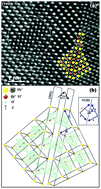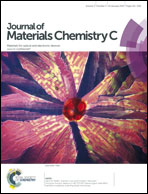A phenomenological model for ferroelectric domain walls and its implications for BiFeO3–PbTiO3 multiferroic compounds
Abstract
Multiferroics are an important family of materials with special properties suitable for applications in advanced technological devices. In most of the cases, the ferroelectric ordering and domain wall formation determine and control their operation and functionality. However, the physical mechanisms by which these domain walls are formed are still not yet completely clarified. Also, in the last few years, few advances are found in the mechanisms used to explain the domain walls and their influence on the materials properties. In this work, the domain walls in ferroelectric multiferroics were investigated by using high-resolution transmission electron microscopy and image simulations. The ferroelectric switching was also observed by piezoresponse force microscopy. A three-dimensional atomic-level framework of 90° ferroelectric domain walls was proposed and the structural and ferroelectric features at the domain walls, such as length, width, and angle between domains, were determined. From these studies, it was found that ferroelectric and structural features of multiferroic BiFeO3–PbTiO3 compounds, such as domain-orientation, electrical conductivity, magnetic ordering, and brittleness due to strains at the domain walls, can be controlled by particular atomic substitutions at the A site of the perovskite structure.


 Please wait while we load your content...
Please wait while we load your content...